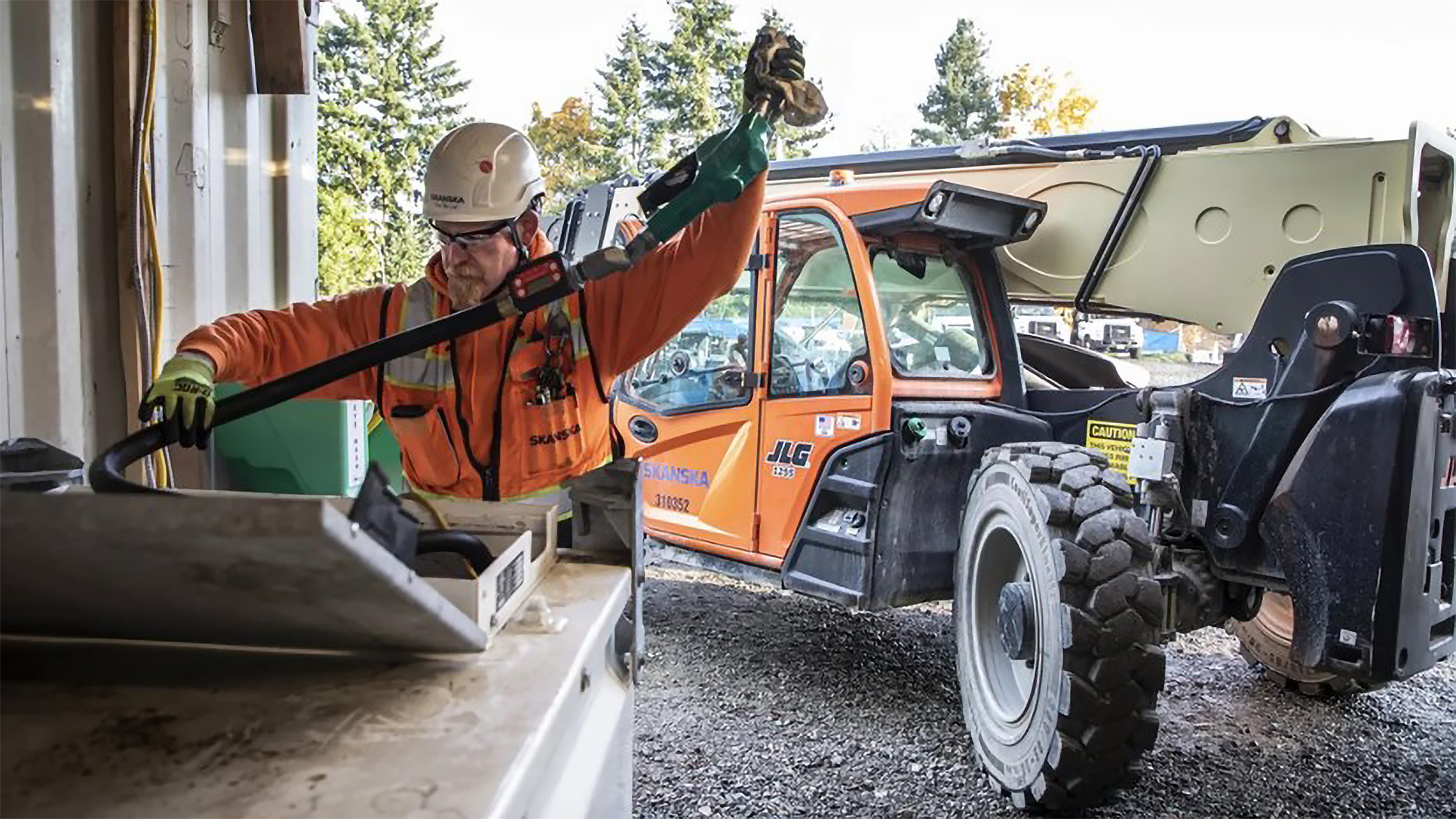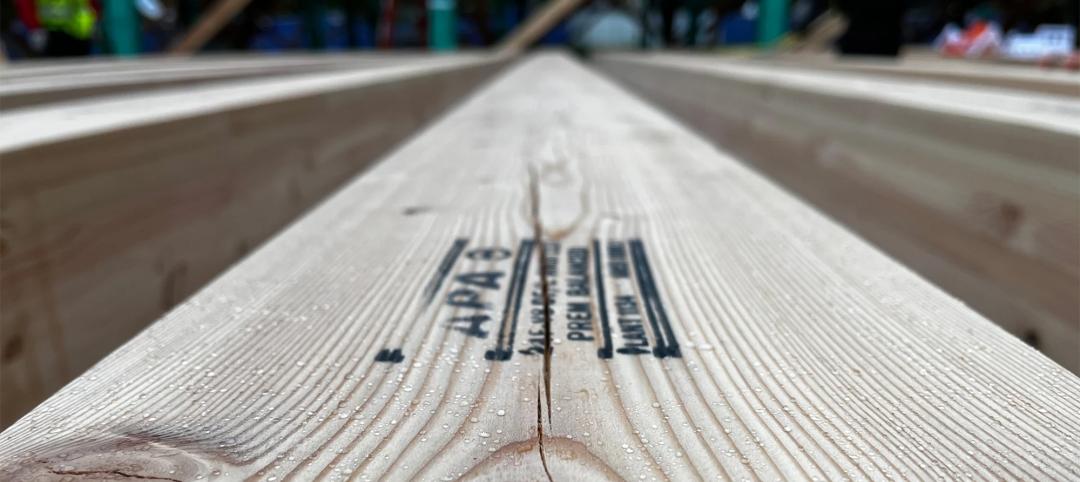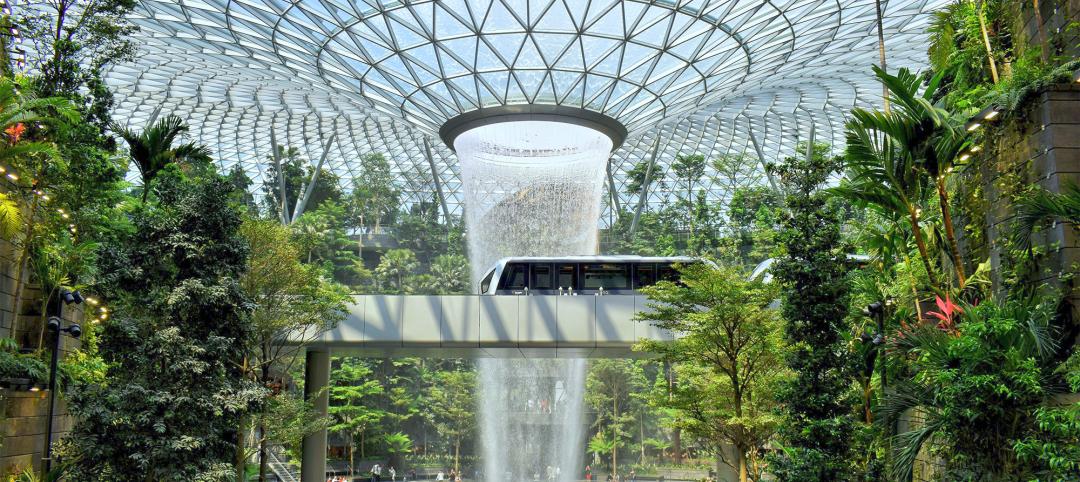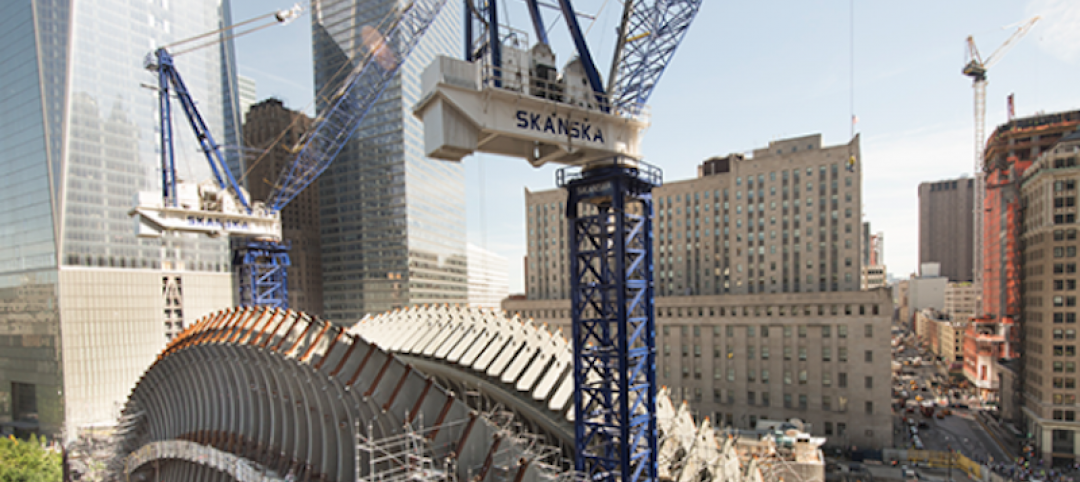As sustainability professionals, we understand the science in depth. While I’m proud to work at Skanska, which has set a goal to achieve carbon neutrality across our entire operations and value chain by 2045, not every company has.
Individuals and companies operate on a spectrum when it comes to climate science and carbon knowledge, and we have a responsibility to help them move towards greater understanding.
Rather than simply talking at people and sharing statistic after statistic, I have found that by doing five specific things, the discussions I’ve been a part of have been more engaging, more fruitful and led to more impactful outcomes for our company, people, clients and communities.
Here are some ways the construction industry can reduce its carbon footprint.
1. Be open to experimentation
Equipment and vehicle technology is evolving at a rapid pace, which gives us a lot to evaluate when it comes to emission reduction opportunities. There’s solar powered equipment, battery storage, hybrid technology, electric vehicles and equipment, and renewable diesel, among other things, to consider. Be open to it all. Pilot it. Measure it. Report on it. And share what works.
On a jobsite in the Seattle area, Skanska recently conducted a year-long pilot of renewable diesel using three sets of sibling heavy machinery, each set identical other than one piece would run using regular diesel and the other would run exclusively on renewable diesel, which burns 40% to 50% cleaner than fossil fuels, even when factoring in the carbon to manufacture and deliver it.
Midway through the pilot, those three vehicles alone had helped avert more than 30 metric tons of C02 emissions, so you can imagine what an entire jobsite of 200+ vehicles weaned off fossil fuels could do.
2. Give people the tools to explore and uncover “ah ha” moments for themselves
As the saying goes, give someone a fish and feed them for a day, but teach someone to fish and feed them for a lifetime. Many of us have become big fans of the Embodied Carbon in Construction Calculator Tool (EC3 Tool) because it can help teams choose which building materials to use on a project—the most impactful way of reducing embodied carbon.
While we can use it and provide suggestions to a team, we can also teach teams to use it and empower them to find the low carbon solutions that best fit their specific project needs.
The tool has even added new functionality for Pilot users to help teams track material transport and jobsite installation emissions.
3. Educate and communicate in ways that relate to your audience
We have a team working on a large campus refresh project in the Seattle area with easy access to public transportation, so it was natural to have a discussion with the team about that option, as well as carpooling. We could have kept the discussion to high-level themes of traffic reduction, reducing tailpipe emissions and cost savings.
But for many of our office and craft workers, getting into the actual dollars and cents of it helped paint a very clear picture. They could see that by carpooling with their buddy 60 miles a day roundtrip, five days a week, in their truck that gets 19 miles to the gallon, at $5.29/gallon and simply by splitting the cost of gas, they’d save themselves +/- $180 a month or more than $2,100 a year in gas.
That’s the kind of conversation that can drive desired behavior change.
4. Listen and empathize
There’s no way to sugar coat it: decarbonizing the construction industry is and will be a tremendous challenge for years to come. Much of that challenge involves re-wiring the way we do business. This is not an easy thing to grasp, especially if we—the sustainability pros—haven’t done it ourselves.
If we’ve not sat around the table with our clients discussing goals, material, labor, timing, pricing and the myriad other things that go into a winning or losing a project, we likely don’t fully understand all the challenges that our stakeholders face while we talk about a lower-emissions future.
By truly listening to our stakeholders, being empathetic to their situations and circumstances, and working to find common ground, we can then find solutions helpful to us all.
5. Avoid putting on the carbon blinders
Reducing our carbon footprint is the name of the game, but it’s not the only thing that matters, and talking about it like it is won’t always get us the win we’re looking for. We should talk up solutions that produce benefits of carbon reduction and also things like cost, air quality, waste reduction, community and more. I’ve learned that by focusing on multiple benefits people and companies become much more receptive to the discussion.
Sustainability professionals like us play a critical role in the construction industry.
Only by embracing our collective creativity, flexibility and willingness to adapt will we continue to grow our success rate of reducing its carbon footprint.
More from Author
Skanska | Sep 26, 2024
5 lessons in water mitigation for mass timber projects
Sustainability leaders from Skanska, RDH, and Polygon share five tips for successful water mitigation in mass timber construction.
Skanska | May 6, 2024
The benefits of biophilic design in the built environment
Biophilic design in the built environment supports the health and wellbeing of individuals, as they spend most of their time indoors.
Skanska | Dec 4, 2023
4 key innovations and construction trends across airport design
Here are some of the key trends Skanska is seeing in the aviation sector, from congestion solutions to sustainability.
Skanska | Jun 29, 2023
K-12 school construction: 5 ways strong community relations can lead to success
When constructing a K-12 school, building positive relationships with the community—including students, parents, school staff and residents—is critical to the success of the project. Here are five ways Skanska puts the community first when building K-12 schools in the Pacific Northwest.
Skanska | Mar 14, 2023
Skanska tests robots to keep construction sites clean
What if we could increase consistency and efficiency with housekeeping by automating this process with a robot? Introducing: Spot.
Skanska | Jan 27, 2023
Key takeaways from Autodesk University 2022
Autodesk laid out its long-term vision to drive digital collaboration through cloud-based solutions and emphasized the importance of connecting people, processes and data.
Skanska | Jul 5, 2022
Tour the new Patricia Reser Center for the Arts in Oregon
This month, the community of Beaverton, Oregon, welcomed a new haven for artistic expression with the opening of Patricia Reser Center for the Arts (The Reser).
Skanska | Jun 22, 2018
What owners should know before choosing the design-build project delivery method
Outside of drawing up a well-written contract, owners often overlook a key attribute that can significantly impact the success of a design-build project, writes Skanska’s Julie Hyson.
Skanska | Dec 7, 2017
Busting the myths: What the “S-word” can mean for construction and development
Sustainability, it’s a trendy term. The problem, however, is that it’s being used in so many different ways that people don’t even know what it means anymore.
Skanska | Aug 15, 2016
Future proofing hospitals
By improving the physical layout of hospitals and medical facilities, we can enhance and increase safety mechanisms, improve care, and help reduce the exposure to medical errors, writes Skanska USA's Andrew Quirk.
















